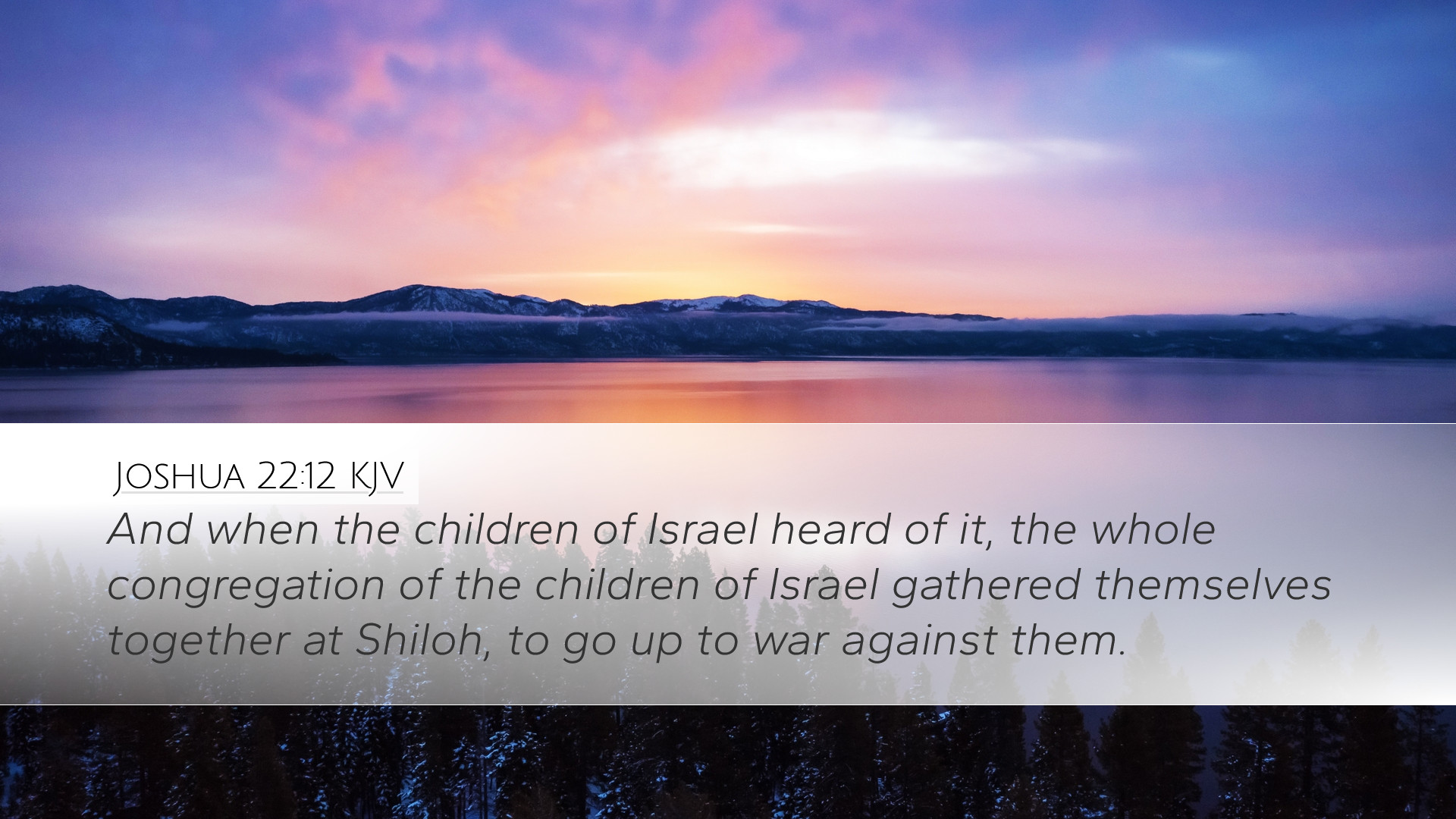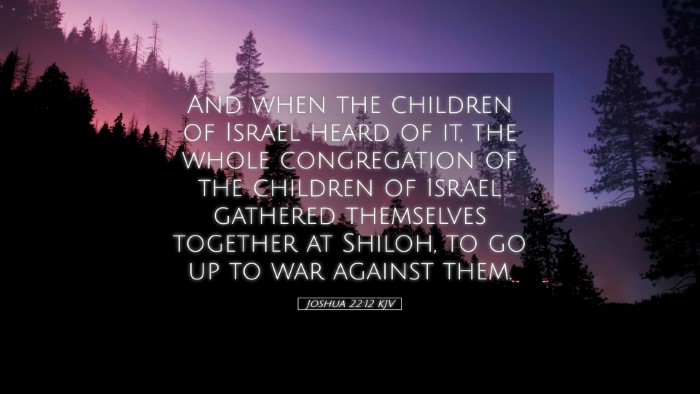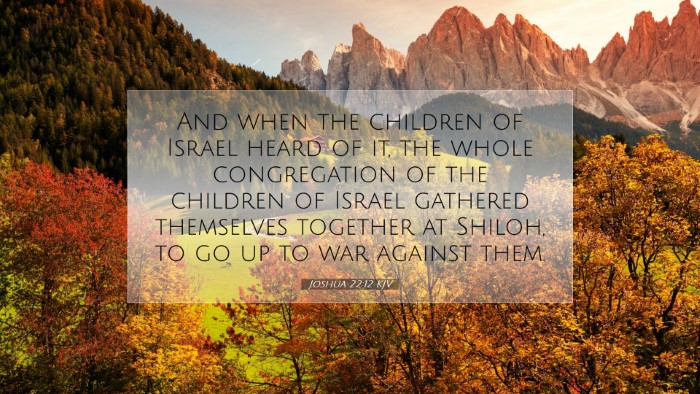Commentary on Joshua 22:12
Verse Context: Joshua 22:12 states, "And when the children of Israel heard of it, the whole congregation of the children of Israel gathered themselves together at Shiloh, to go up to war against them."
Overview
This verse signifies a critical juncture in the history of Israel where misunderstandings and potential conflict arise among the tribes. The children's decision to take arms against their brethren highlights the seriousness with which they view deviance from God's commandments. In understanding this text, we should reflect on the implications of unity and the importance of maintaining doctrine and practice within the body of believers.
Understanding the Gathered Congregation
- Matthew Henry's Insights: Henry emphasizes the immediacy of the Israelites' response, recognizing that the assembled congregation at Shiloh was central to Israel's worship and governance. This illustrates the weight of decision-making that the leaders felt, as they were willing to mobilize for war rather than let a potential apostasy fester.
- Albert Barnes's Commentary: Barnes notes that gathering at Shiloh held both geographic and spiritual significance for the Israelites. Shiloh was the location of the Tabernacle and a center for worship, symbolizing their collective identity and commitment to God’s covenant. Their unity in action serves to remind each generation of the necessity of adhering to divine standards.
- Adam Clarke's Analysis: Clarke highlights the implications of the tribes of Israel perceiving a breach in their covenant. He notes that it wasn’t merely a misunderstanding; it had the potential to endanger the entire nation. The urgent nature of their gathering reflects a deep commitment to the sanctity of their relationship with God and one another.
Significance of Conflict Resolution
In situations where perceived threats arise among believers, a careful and deliberate approach to conflict resolution is paramount. The leaders’ decision to confront the tribes south of the Jordan before jumping to conclusions is a model for the church today. This notion is crucial for pastors and theologians who are often faced with division among congregants.
- Matthew Henry: He asserts that the process of confronting issues with gentleness and seriousness can lead to a restoration of unity.
- Albert Barnes: Barnes encourages a spirit of openness and dialogue. He argues that the communication of intentions and beliefs can often resolve misunderstandings that could escalate into division.
- Adam Clarke: Clarke posits that every believer should be ready to explain their actions, especially when those actions might raise concern among brethren. His insight suggests that transparency strengthens community ties.
Theological Implications
Joshua 22:12 serves as a reminder of the covenant God made with His people. The readiness of the tribes to go to war over what may have been a miscommunication reinforces the importance of doctrine. Failure to uphold God’s statutes could lead to dire consequences.
- Matthew Henry: In his explorations, he points to the danger of falling away from God’s commandments, asserting that if one part of the body of believers strays, the whole body is at risk.
- Albert Barnes: He stresses the role of each tribe in maintaining unity and doctrine. Barnes encourages leaders to guide their followers in interpreting God’s law correctly and fostering connections across different factions.
- Adam Clarke: Clarke also reflects upon the nature of God’s covenant and its relevance to believers. He argues that maintaining our commitments requires vigilance and unwavering faith to prevent disunity among believers.
Application for Today’s Believers
This scripture is a powerful call for reflection on how modern believers react to potential conflicts or misunderstandings within their communities of faith. In this age of division, both within and outside of the church, the example set forth in Joshua stands as an admonition for unity as well as an encouragement toward humility and understanding.
- Pastoral Reflection: Pastors are urged to promote peace and reconciliation rather than conflict. The narrative illustrates the importance of pastoral wisdom in dealing with misunderstandings among congregants.
- Theological Education: Students and scholars can examine the implications of covenant fidelity in community settings; both historical and contemporary contexts demonstrate the necessity of understanding how belief influences action.
- Ecclesiastical Leadership: Leaders are challenged to evaluate their guidelines for conflict resolution, ensuring they are rooted in scripture as they seek to maintain unity in the body of Christ.
Conclusion
Joshua 22:12 encapsulates a critical moment in Israel's history that resonates with present-day believers, calling for vigilance, unity, and open dialogue among communities of faith. The insights gleaned from respected biblical scholars provide a rich foundation for ongoing study and reflection on the importance of adhering to God's commandments and the necessity of addressing disputes with grace and truth.


